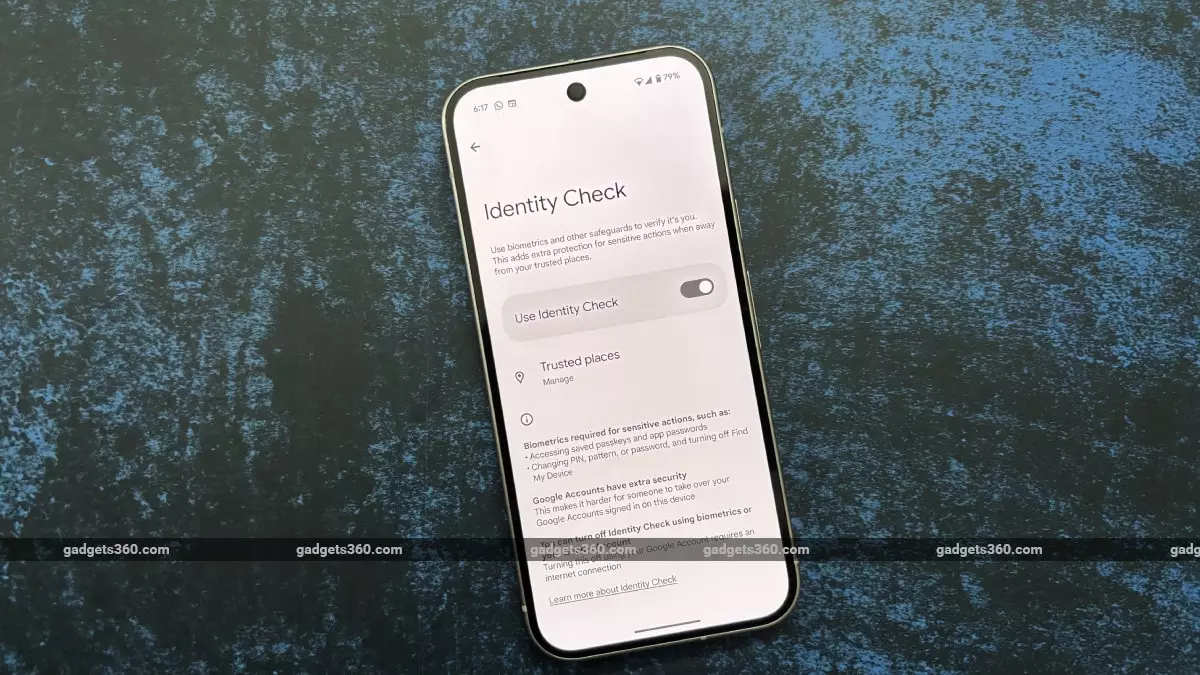In our rapidly evolving digital landscape, the paramount concern for smartphone users is the safety of their personal information. With incidents of theft and hacking on the rise, tech giants like Google and Apple are stepping up to protect their users with advanced security features. The recent news about Google’s intention to expand its Identity Check feature is a pivotal response to these security challenges. This move isn’t just about adding another layer of protection; it reflects an acute awareness of the vulnerabilities that users face daily. As criminals become increasingly sophisticated, it is imperative that tech companies prioritize and innovate in user security.
The Mechanism of Protection
At its core, Google’s Identity Check acts as a gatekeeper. By requiring biometric authentication for significant adjustments to settings or access to sensitive information, it substantially reduces the risk of unauthorized access. This feature, initially found in select Samsung and Google Pixel devices, exemplifies how integrated technology can proactively guard against potential theft. The demands of a biometric class 3 authentication serve as a bulwark against even the most clever thieves, making it extraordinarily challenging for anyone to exploit a user’s account without being physically present to authenticate their identity.
Think about it: losing a smartphone is dreadful enough. Now imagine the tyranny of not just losing your physical device but also the keys to your entire digital kingdom. Identity Check seeks to abolish that fear. By making the act of changing essential settings dependent on biometric proof, users can navigate their digital lives with confidence. This feature transforms the way we engage with our devices, transitioning from passive users to active defenders of our private information.
Comparative Analysis: Google vs. Apple
Google’s Identity Check is not the sole player in this field. Apple’s Stolen Device Protection, introduced with their iOS 17.3 update, echoes similar protective measures. However, the distinct approaches both companies take highlight the generational gap in how security features evolve. While Apple can be seen as reacting to security trends, Google appears to be anticipating future threats, positioning its feature within a broader ecosystem that anticipates the needs of users long before they become critical.
Adopting and adapting these security measures is not merely a response to hacktivism or criminal activity; it is a strategic maneuver to foster user loyalty amidst a competitive marketplace. With the growing number of digital users aware of their vulnerabilities, the companies that prioritize security will find themselves at an advantage. But one must ask: are these features merely commodified safety nets to assuage consumer fears, or are they genuinely transformative steps toward a safer digital society?
User Empowerment Through Robust Security Features
Users are often caught in a paradox, grappling with the balance between convenience and security. There is a tendency to underestimate the importance and simplicity of features like Identity Check until one is directly affected by a data breach or theft. Google’s new functionality is a quintessential example of user empowerment through technology, allowing users to regain control over their data. It is a necessary evolution, addressing real user fears in an era marked by increasing digital dependency.
Interestingly, the introduction of these features not only aims at protecting personal data but also reshapes how individuals perceive their devices. By enabling fancy biometric authentication—something that was once the realm of science fiction—users are now more aware of and invested in their privacy and digital security. They are not just passive recipients of technology; they are active participants in an intricate game of digital hide-and-seek.
The Road Ahead: Innovation as a Continuous Journey
With the rollout of the Identity Check feature projected to expand to various Android devices, it’s clear that Google is committed to ensuring that security is not just an option but a built-in aspect of the user experience. This evolution is not just beneficial—it is essential. As technology continues to advance, the conversation around data privacy must remain at the forefront. Increasing security measures like the Identity Check will only grow more crucial as we navigate an ever-complex digital era.
The onus now rests on both end-users and technology providers to actively embrace these innovations. In a world rife with risks, the advent of proactive features like Identity Check signifies a promising, albeit demanding, journey toward a safer digital ecosystem. The partnership between user vigilance and technological advancement will ultimately dictate the efficacy of these measures, as we collectively strive for a secure and user-centric digital experience.


Leave a Reply